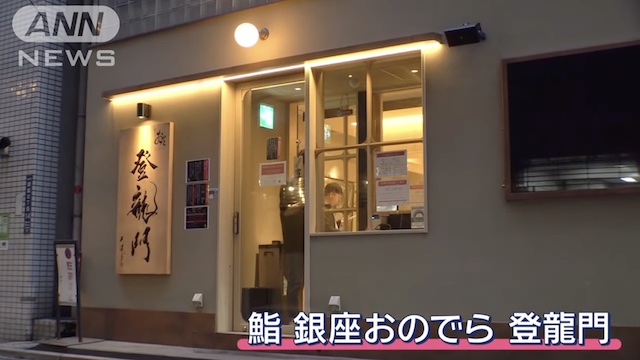TOKYO, May 20 (News On Japan) - In the heart of Ginza lies the upscale sushi restaurant 'Toryumon,' known for serving sushi that costs 27,500 yen at its nearby flagship store for just 4,980 yen using the same ingredients. The primary reason for this affordability is that the restaurant serves as a training ground for young apprentice chefs.

In the sushi industry, it is said that it takes ten years of training before one can begin making sushi. The program follows a 22-year-old apprentice chef aiming for a promotion to a full-fledged sushi chef in just his third year. Suddenly, he is informed of an unexpected "promotion test." Will he earn the title of a full-fledged chef?
Why Is Luxury Sushi Available at a Bargain?
One reason for the affordability is that this is a rare "standing sushi bar" in Ginza. Additionally, the kitchen uses a massive "central kitchen" in the basement, which works in tandem with the flagship store nearby for efficiency.
However, the biggest reason for the low prices is the apprentice chefs. The sushi is prepared by young chefs who are considered "teko" or apprentice chefs at the flagship store, where they are not even allowed to fillet fish.
Yamamoto Hayato, a 23-year-old apprentice chef, says, "Typically, it takes ten years of training before you can start making sushi in Ginza. I am grateful for this opportunity to train at this restaurant."
The restaurant covers the cost of training the young chefs, which helps keep prices low. Not only are the omakase sets affordable, but individual pieces are also priced significantly lower. For example, the popular bafun uni costs 980 yen here, compared to 3,300 yen at the flagship store. Similarly, the meticulously prepared simmered anago costs 580 yen instead of 1,650 yen.
Akifumi Sakagami, the executive head chef of Onodera Food Service's "Sushi Ginza Onodera," admits, "It's tough, but we can't focus solely on profit."
Sakagami explains, "Without clear goals for when they can start making sushi or filleting fish, young chefs may leave. So, we decided to let them try sooner." This system helps prevent young chefs from leaving and allows them to be promoted to full-fledged chefs if their skills are recognized. So far, three have been promoted.
The restaurant's name, "Toryumon," is synonymous with the phrase "climbing the dragon gate," referring to their apprentice chefs aiming to become full-fledged chefs.
The Difference in Sushi Quality
One standout apprentice is Naoki Egi, a 22-year-old chef aspiring to become a full-fledged chef. Egi has been working at the restaurant for two and a half months. Under the watchful eye of Executive Chef Sakagami, Egi practices making sushi every day.
The difference in sushi quality lies in how the vinegared rice is shaped. While both pieces may look the same from the outside, the sushi made by the executive chef has a light, airy texture with an even thickness. Egi's sushi, however, shows uneven thickness and a lack of consistency.
Gaining Knowledge from the Chef
Egi eagerly follows Sakagami on fish-buying trips to learn how to select the best fish. Sakagami emphasizes the importance of balancing quality and price. They come across a massive wild yellowtail, which is less in demand and therefore more affordable.
Egi, surprised by this insight, says, "I had no idea large, wild fish could be a good deal."
Practicing at Home
At home, Egi practices shaping rice balls using paper to simulate sushi rice, demonstrating his dedication to mastering the craft.
The Promotion Test
Egi is soon given a promotion test. He must prepare akami sushi in just two steps, as previously instructed. Despite his efforts, the rice balls he makes are too dense due to excessive handling.
Chef Sakagami evaluates Egi's sushi, pointing out that Egi's rice weighs 9 grams compared to his own 7 grams, indicating too much handling. Egi scores 27 out of 100 but remains determined to keep improving.
"I'll keep trying," Egi vows, undeterred by the setback.
Source: ANN















